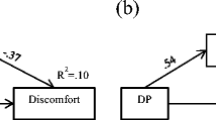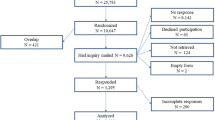Abstract
This paper contends that principles of virtue ethics have the potential to both supplement and complement academic integrity policy in the adjudication of undergraduate student academic integrity breaches. The paper uses elements of grounded theory to explore responses from 15 Academic Integrity Breach Decision Makers (AIBDMs) at an Australian university, and in particular, the process they use to determine outcomes for student breaches of academic integrity. The findings indicate that AIBDMs often use principles of virtue ethics to help provide nuanced judgement on sometimes complicated breaches of ethical behaviour. The findings demonstrate that many AIBDMs supplemented their knowledge of institutional academic integrity policy with a deep commitment to their own virtuous behaviour.
Similar content being viewed by others
Notes
We refer to the institution from which this data is drawn as The University for reasons of confidentiality, and also because we do not wish to infer that the issues of academic integrity mentioned here are unique to this particular institution.
Pseudonyms are used for all interviewees.
References
Annas, J. (2006) Virtue ethics, The Oxford Handbook of Ethical Theory, http://www.arizona.edu. Accessed 15 Mar 2010.
Bretag, T. (2011) 'You have to really harden your heart': The emotional work of academic integrity decision-makers in Australian higher education, Poster presented to the 6th Asia-Pacific Symposium on Emotions in Worklife, University of South Australia, 18 November.
Bretag, T. & Green, M. (2009). Determining outcomes for academic misconduct: Is it more important to be consistent or fair?, refereed paper presented at the 4th Asia-Pacific Conference on Educational Integrity: Creating an inclusive approach, University of Wollongong, 28–30 September
Bretag, T., & Green, M. (2010). Factors integral to the case’: Categorising qualitative factors used to determine academic integrity outcomes, refereed paper presented at the 4th International Plagiarism Conference. Northumbria University: Newcastle-upon-Tyne.
Carroll, J. & Appleton, J. (2005). Towards consistent penalty decisions for breaches of academic regulations in one UK university. International Journal for Educational Integrity, 1 (1). (Retrieved 28/5/2008) http://www.ojs.unisa.edu.au/index.php/IJEI/article/viewFile/15/5
Carroll, J., & Seymour, D. (2006). The effect of a penalty tariff on consistent decision-making in cases of student plagiarism. Paper presented at the JISC International Plagiarism Conference. U.K.: Gateshead (Retrieved 28/5/2008).
Edwards, B. (2002). Deep insider research. Qualitative Research Journal, 2(1), 71–84.
Foot, P. (1978). Virtues and Vices and Other Essays in Moral Philosophy. London: Basil Blackwell.
International Centre for Academic Integrity (ICAI). (2013). Fundamental values project (revised). http://www.academicintegrity.org/icai/resources-2.php. Accessed 3 Apr 2014.
Jordan, A. E., & Meara, N. M. (1990). Ethics and professional practice of psychologists: The role of virtues and principles, Professional Psychology: Research and Practice. Vol, 21(2), 107–114.
MacIntyre, A. (2007). After Virtue (3 rd Ed). Indiana: University of Notre Dame Press.
Tennant, P. & Rowell G. (2010) Benchmark Plagiarism Tariff: A benchmark tariff for the application of penalties for student plagiarism in higher education, plagiarismadvice.org, http://www.plagiarismadvice.org/BTariff.pdf. Accessed 26 Oct 2010.
Tennant, P., Rowell, G. & Duggan, F. (2007) Misconduct Bench-marking Research Project: Part I The Range and Spread of Penalties Available for Student Plagiarism among UK Higher Education Institutions. http://www.plagiarismadvice.org/advice-and-training. Accessed 26 Oct 2010.
Author information
Authors and Affiliations
Corresponding author
Appendices
Appendix 1: Semi-Structured Interview Questions
How long have you been working as an Academic Integrity Breach Decision Maker (AIBDM)?
Why did you become an AIBDM?
Could you describe, in your own words, your role as AIBDM?
In your position as AIBDM, which role do you most strongly identify with: judge, gatekeeper, counsellor, educator (or other)? Please explain.
In your opinion, are there times when these multiple roles conflict with one another?Please provide details.
Does your role as AIBDM conflict in any way with your other university roles (eg. Lecturer, researcher)?
Could you describe, in your own words, any stresses associated with your role as AIBDM?
How do you manage the emotional labour involved in the process of determining penalties/outcomes of academic integrity investigations?
Detail personal strategies
Detail institutional strategies (eg consulting with other Academic Integrity Breach Decision Makers via the Discussion List).
Do you feel adequately supported in your role as AIBDM?
How much of your time would you estimate that you spend on the AIBDM role?
How much of your workload is officially allocated to the AIBDM role?
Do you have any suggestions for how to improve institutional support for the AIBDM role?
Appendix 2
University academic integrity policy
The University recognises that academic misconduct can occur through unfamiliarity with academic conventions and all issues of academic misconduct will be considered in light of:
-
a)
the extent of the misconduct
-
b)
the student’s intention and/or motivation
-
c)
contextual factors such as:
-
i.
stage/level of program
-
ii.
number of previous offences
-
iii.
student’s learning background
-
i.
-
d)
convention of discipline
-
e)
the impact of a particular outcome on a student’s progression
-
f)
information provided to the student about academic integrity as part of their course
-
g)
where applicable, information about the student held on the academic misconduct database
Rights and permissions
About this article
Cite this article
Bretag, T., Green, M. The Role of Virtue Ethics Principles in Academic Integrity Breach Decision-Making. J Acad Ethics 12, 165–177 (2014). https://doi.org/10.1007/s10805-014-9209-z
Published:
Issue Date:
DOI: https://doi.org/10.1007/s10805-014-9209-z




